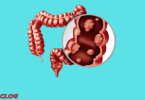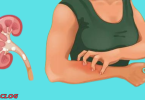Clogged arteries are a condition that can pose a risk to your health if not controlled in time. What are the symptoms and causes of clogged arteries that you should know?
The various cells and parts of the body need sufficient amounts of oxygen and nutrition daily to perform their functions to the fullest extent, which requires the body’s arteries to be completely open to allow the passage of blood loaded with the aforementioned substances.
But many problems can affect blood circulation due to various factors, including clogged arteries. Are you in danger? What are the symptoms and causes of clogged arteries?
Symptoms of clogged arteries
Unfortunately, the signs and symptoms of clogged arteries do not usually appear in the patient until after the condition develops and worsens, but if they do appear, these are the most important signs that you can notice in the patient at different stages of his suffering. Clogged arteries:
- General symptoms of clogged arteries
The following are the most important symptoms of clogged arteries that can appear in general:
pain in chest.
Excessive sweating.
Fatigue and general exhaustion.
shortness of breath.
Heart palpitations.
Persistent nausea.
lower back pain.
Erection problems in men.
Stroke or heart attack.
- Symptoms of clogged arteries before a stroke
Several distinct symptoms usually appear in a patient shortly before a stroke, such as:
Stuttering when trying to speak and not being able to pronounce certain letters.
Numbness, tingling, or even paralysis on one side of the body.
Loss of the ability to see in one eye.
- Symptoms of clogged arteries in patients with peripheral arterial disease
If the clogged arteries are related to peripheral arterial disease, the patient may experience the following symptoms:
Pain in the feet, which increases especially when walking.
Gangrene.
Wounds heal extraordinarily slowly.
Visible ulcers on the feet.
Drawing, burning, or chest pain.
Noticeable coldness in the feet.
Pain in the shoulders or arms.
Dizziness and excessive sweating.
Jaw pain in women especially.
Diagnosis of clogged arteries
The following are the methods used in diagnosis, such as:
Cholesterol screening.
Pulmonary radiography.
To clarify.
Ultrasound.
Cardiac stress test.
Electrocardiogram.
Magnetic resonance imaging.
To clarify.
Angiography.
Causes of clogged arteries and risk factors
In some cases, these arteries can become partially or completely blocked as a result of the accumulation of fats, cholesterol, and calcifications on the inner walls of the blood vessels.
The following are the most important causes of clogged arteries and the factors that can increase the risk of developing this condition in general:
High levels of bad cholesterol in the body compared to low levels of good cholesterol.
Having diabetes or entering the pre-diabetic stage where a person is on the verge of developing the disease.
Hypertension.
Smoking.
Constant anxiety.
obesity.
Hereditary.
Lack of movement.
Bad feed.
Complications and risks of clogged arteries
If the disease is not treated and controlled medically, clogged arteries can lead to serious problems, such as: various heart diseases, high blood pressure, clots, and even death.
Therefore, it is best to seek medical attention immediately if you experience any of the above symptoms of clogged arteries, especially in groups at high risk of infection.
Tips and instructions to avoid clogged arteries
There are many lifestyle changes you can make to reduce your risk of developing clogged arteries and the serious consequences and complications this condition can cause you. Here are our most important tips in this regard:
Follow a healthy diet free of bad cholesterol.
Stop smoking and shisha.
Take the medications prescribed by your doctor, and do not neglect to visit him regularly for periodic examinations.
Exercise and lose weight.
Stop drinking alcohol completely.







